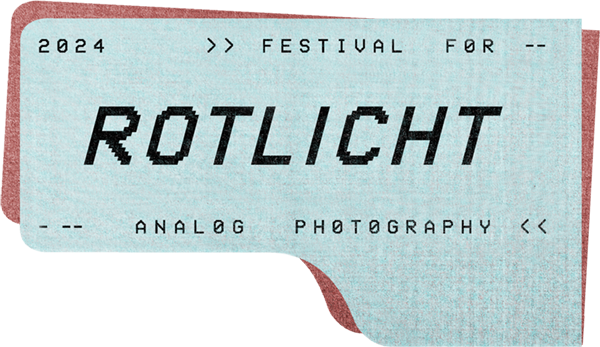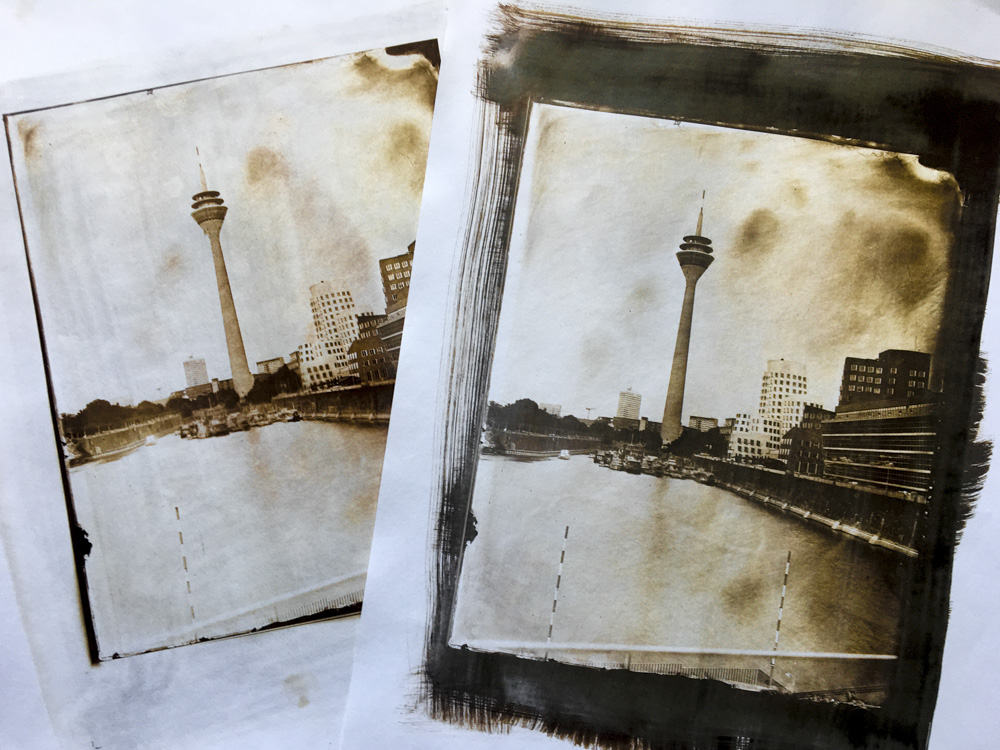Within the whole world of iron-based processes, printing in platinum / palladium stands for supreme quality and permanence, but the expense of these options deters many practitioners from attempting them. At the other end of the iron-alternative scale is the cyanotype process, providing an image in Prussian blue: it is truly inexpensive but limited by a colour that is rather strident for some tastes and subject matter. In the center stand the iron-based silver printing processes such as Van Dyke Brown or Argyrotypes, which can aspire to the qualities of platinum without its expense – but also without its certain permanence. Iron-silver processes are useful as an introduction to alternative printing for teaching workshops, for proofing large format negatives, and as a starting point for further toning of the colloidal silver image.
Arndt & Troos developed the Van Dyke Brown process in 1889. This late 19th Century process is similar to Cyanotype as an iron-based printing out process. However, as the name suggests, you get a lovely rich warm color instead of the Cyanotype’s blue. The composition of the Van Dyke Brown emulsion is with the addition of silver nitrate that the unique brown colour is achieved. Although the silver content requires that the Van Dyke print needs to be thoroughly processed, fixed and washed, it opens up additional toning options. In this one-day workshop, you will learn to create the emulsion, produce photographic pictures. You will explore coating techniques, the different characteristics of and learn to tone your images in gold toner.
Part 1
- What is a Van Dyke Brown print?
- Science behind Van Dyke Brown printing
- How to make Van Dyke Brown prints
Part 2
- Photo emulsions for Van Dyke Brown and Argyrotypes
- Photo papers
- About negatives
- Toning
The workshop will be held by Dino Rekanovic and Torsten Wieczorek and will take place with at least 2 binding registrations.
Innerhalb der gesamten Bandbreite der eisenbasierten Druck-Verfahren steht der Druck in Platin / Palladium an erster Stelle, wenn es um Qualität und Beständigkeit geht, aber die Kosten dafür halten viele Praktiker davon ab, sie auszuprobieren. Am anderen Ende der Skala der eisenbasierten Druckverfahren steht das Cyanotypie-Verfahren. Es ist wirklich preiswert, aber durch eine für manche Geschmäcker und Sujets recht schrille Farbe, das Preußisch Blau, eingeschränkt. In der Mitte stehen die Silberdruckverfahren auf Eisenbasis, die die Qualitäten von Platin anstreben können, ohne dessen Kosten zu verursachen – aber auch ohne dessen Archivfestigkeit. Eisen-Silber-Verfahren wie Van Dyke Brown oder Argyrotypie eignen sich als Einführung in den alternativen Druck, zum Proofen großformatiger Negative und als Ausgangspunkt für weitere Tonungen des Bildes.
Arndt & Troos entwickelten 1889 das Van Dyke Brown-Verfahren. Dieses Verfahren aus dem späten 19. Jahrhundert ähnelt der Cyanotypie, da es ein Druckverfahren auf Eisenbasis ist. Allerdings erhält man, wie der Name schon sagt, eine schöne, satte, warme Farbe anstelle des Blaus der Cyanotypie. Die Zusammensetzung der Van-Dyke-Braun-Emulsion beruht auf der Zugabe von Silbernitrat, wodurch die einzigartige braune Farbe erzielt wird. Obwohl die Verwendung von Silbernitrat es erfordert, dass der Van Dyke-Abzug gründlich entwickelt, fixiert und gewaschen wird, ermöglicht er zusätzliche Tonungsmöglichkeiten. In diesem eintägigen Workshop lernen Sie, die Emulsion herzustellen und fotografische Bilder zu produzieren. Sie lernen Beschichtungstechniken und die verschiedenen Eigenschaften von Toner, wie z.B. Goldtoner kennen und lernen, wie Sie Ihre Bilder mit tonen.
Teil 1
- Was ist der Van Dyke Brown Druck?
- Die Wissenschaft hinter dem Van Dyke Brown Druck
- Wie man Van Dyke Brown Drucke herstellt
Teil 2
- Fotoemulsionen für Van Dyke Brown Drucke und Argyrotypien
- Fotopapiere
- Über Negative
- Tonen
Der Workshop wird von Dino Rekanovic und Torsten Wieczorek geleitet und findet bei mindestens 2 verbindlichen Anmeldungen statt.

